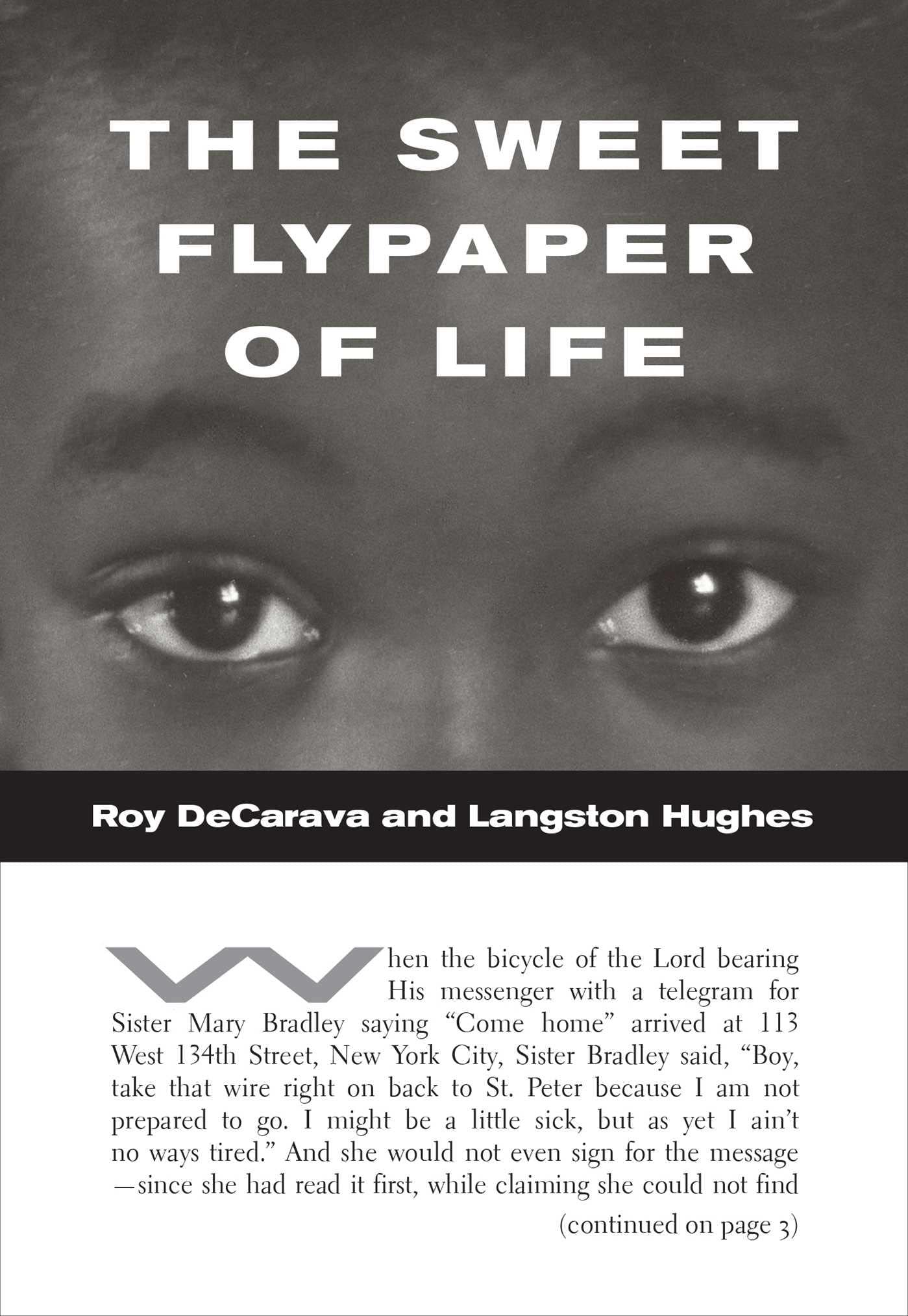Couldn't load pickup availability
"The people in these photographs had no walls up. They just accepted me and permitted me to take their photographs without any self-consciousness." --Roy DeCarava
The Sweet Flypaper of Life is a "poem" about ordinary people, about teenagers around a jukebox, about children at an open fire hydrant, about riding the subway alone at night, about picket lines and artist work spaces. This renowned, life-affirming collaboration between artist Roy DeCarava and writer Langston Hughes honors in words and pictures what the authors saw, knew, and felt deeply about life in their city.
Hughes's heart-warming description of Harlem in the late 1940s and early 1950s is seen through the eyes of one grandmother, Sister Mary Bradley. As she guides the reader through the lives of those around her, we imagine the babies born, families in struggle, children yet flourishing. We experience the sights and sounds of Harlem as seen through her learned and worldly eyes, expressed here through Hughes's poetic prose. As she states, "I done got my feet caught in the sweet flypaper of life and I'll be dogged if I want to get loose." DeCarava's photographs lay open a world of sense and feeling that begins with his perception and vision. The ruminations go beyond the limit of simple observation and contend with deeper meanings to reveal these individuals as subjects worthy of art. While Hughes states "We've had so many books about how bad life is, maybe it's time to have one showing how good it is," the photographs bring us back to this lively dialogue and a complex reality, to a resolution that stands with the optimism of the photographic medium and the certainty of DeCarava's artistic moment.
In 1952 DeCarava became the first African American photographer to win a John Simon Guggenheim Memorial Fellowship. The one-year grant enabled DeCarava to focus full time on the photography he had been creating since the mid-1940s and to complete a project that would eventually result in The Sweet Flypaper of Life, a moving, photo-poetic work in the urban setting of Harlem. DeCarava compiled a set of images from which Hughes chose 141 and adeptly supplied a fictive narration, reflecting on life in that city-within-a-city. First published in 1955, the book, widely considered a classic of photographic visual literature, was reprinted by public demand several times. This fourth printing, the Heritage Edition, is the first authorized English-language edition since 1983 and includes an afterword by Sherry Turner DeCarava tracing the history and ongoing importance of this book.
Over the course of six decades, American artist Roy DeCarava (1919-2009) produced a singular collection of black-and-white photographs of modern life that combine formal acuity with an intimate and deeply human treatment of his subject matter. Grounded by a unified theory of the visual plane, his work displays a subtle mastery of tonal and spatial elements and devotion to the medium of photography as a means of artistic expression. DeCarava created images that carry an emotional impact in their immediate relationship to the viewer, while also revealing less-than-visible terrains. DeCarava's pioneering work privileged the aesthetic qualities of the medium, carrying the ability to reach the viewer as a counterpoint to the view of photography as mere chronicle or document and helping it to gain acceptance as an art form in its own right.
Langston Hughes (1902-1967) was a poet, novelist, playwright, and social activist. Known worldwide as a key figure of the Harlem Renaissance, Hughes's work has been significant in introducing black history and culture into the corpus of American cultural history as well as inspiring with his humanistic concerns, writers in Africa, the Caribbean, Europe, and South America. While living in Harlem, Hughes maintained close relationships with other writers working in and around the city--Aaron Douglas, Zora Neale Hurston, Claude McKay, and Wallace Thurman were all considered friends and they would frequently gather to discuss politics, writing, and literature. Together, this close group of writers was instrumental in giving voice to the communities that would not accept persecution and marginalization. Hughes's dispatches for the New York newspapers raised quotidian reportage to an art, filing moving descriptions of the famed Harlem Brigade who were martyred during the Spanish Civil War. Later in his life Hughes turned toward collaboration, working with the German composer Kurt Weill on the 1947 opera Street Scene, with jazz musicians including Charles Mingus and with the photographer Roy DeCarava on The Sweet Flypaper of Life.
Sherry Turner DeCarava is an art historian, curator, and independent scholar in the fields of traditional arts and contemporary American photography. She has taught or lectured extensively at universities and museums, including Hunter College, City University of New York (CUNY), Brooklyn Museum, and Rockefeller University. Serving as the executive director, the principal focus of her professional career has been the development of The DeCarava Archives, which supports exhibition and scholarly research projects related to the work of her late husband Roy DeCarava. She is the author of two definitive texts on his photography, including that in Roy DeCarava: A Retrospective published by The Museum of Modern Art, New York (1996) and in Roy DeCarava: Photographs, a monograph published by the Friends of Photography/Ansel Adams Trust (1981). Awarded the Prix de la Photographie by Les Rencontres de la Photographie, the Arles Center for Culture, in its annual survey of international photography, her 1981 text was lauded as the best photo/text collaboration of the year. In 2014 she initiated First Print Press, beginning a process to republish classic Roy DeCarava books, while bringing new photographic projects into print.
- Publisher: David Zwirner Books; Reprint edition (September 4, 2018)
- Language: English
- Paperback: 106 pages
- ISBN-10: 0999843818
- ISBN-13: 9780999843819
- Item Weight: 6.3 ounces
- Dimensions: 5 x 0.3 x 7.25 inches

